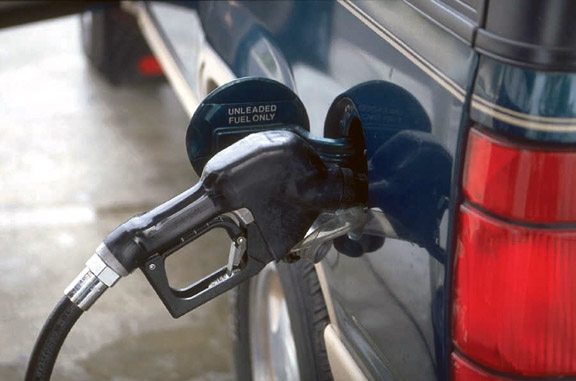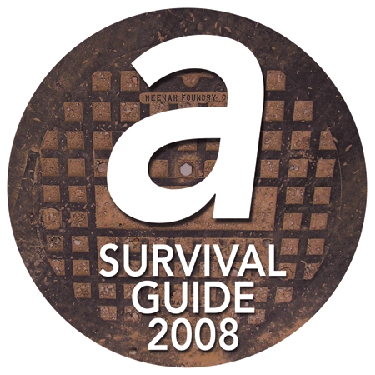As gas prices dance around $4 per gallon, the governor is proposing a package that could dole out more than $210 million in tax relief to citizens hit with high fuel prices. It would also give more than $3 million in aid to school districts to help offset busing costs. Funds would come from an unexpected state budget windfall that’s the result of increased tax revenue from the oil and gas industry. The package will be debated at the Special Session scheduled to begin Aug. 15. But are rebates the answer? The New Mexico Public Interest Research Group (NMPIRG) released an analysis in July that found that since President Bush signed the stimulus rebates into law on Feb. 13, the average household spent more than $1,500 on fuel. The study concludes rebates primarily find their way back into the gas tank. According to NMPIRG, Americans have driven fewer miles in the last year than in the previous year, a trend not seen in three decades. Since February, the average cost of gasoline per household went from $60 per week to nearly $100, according to the organization.Meanwhile, oil companies continue to rake in record profits. Exxon Mobil posted the highest corporate profit ever this quarter, a staggering $11.67 billion. Exxon is beating its own historic profit record, $11.66 billion in the third quarter of 2007, according to the New York Times . The Magic Bus ABQ Ride announced in June that it had 10 million boardings between June 2007 and June 2008, an increase of 10 percent over the previous year and the largest figure ever for Albuquerque’s public transit system. Fuel prices, however, are not the only reason some have chose public transport.Marissa Reno moved to the east Downtown area in mid-March and works at Sandia Labs. "Somebody said, Hey, you know, you could take the bus," she says. "Ever since I discovered the bus, my car just sits." Reno doesn’t only use the bus for commuting, she also uses it to run errands, visit friends and family, and for most of her other transportation needs. City Councilor Michael Cadigan says there will be increasing demand for public transit in the future, and he’s decided to make use of the Albuquerque bus system himself. Economic issues play a part in his ridership. He estimates his daily bus commute from the Westside into the city is 30 miles. It costs him about 40 percent of what it would to drive, assuming the $1 ABQ Ride standard fare. “With gas at four bucks a gallon—I’ve got a Honda Accord that probably gets about 27 miles per gallon—you can obviously say about five bucks a day.” Cadigan says he has found the bus ride less stressful than dealing with traffic himself. “It’s a lot more relaxing to take the bus,” he says.Cadigan continued his bus commuting through the summer months and set a goal of limiting his gas usage to one-quarter of a tank per week. “During the school year I have to pick up my daughter from school," he says, "and that area is not served by a bus line." The city plans to extend service to the Cottonwood Mall area to accommodate rider demand, he adds. To improve Albuquerque’s public transit, he would like to see more dedicated bus lanes and signals, as well as more of the technology that allows Rapid Ride buses to change lights from red to green as they approach an intersection. Out in the Cold? The House passed the “ Saving Energy Through Transportation Act” at the end of June. The bill will give $2 billion to transit authorities across the country to reduce fares and expand service. If the bill passes, Albuquerque would receive almost $3 million over two years, according to NMPIRG. All of New Mexico’s representatives voted in favor of passing the bill, which hasn’t yet been voted on in the Senate.Public transit might prove a popular solution for urban dwellers, but some New Mexicans will not be able to avoid using a car, and fuel costs affect heating as much as they do driving. The state is considering stepping in to offer some relief. Gov. Bill Richardson’s tax relief package is not solely directed at fuel cost assistance and would send a “cost of living tax rebate” into the pockets of New Mexicans, among the other initiatives.It’s structured to give a higher amount of relief to lower-income taxpayers. The cost of living tax rebate would offer $150 plus $40 for each dependent to families making up to $60,000 per year. The rebate decreases in increments of $25 from there. The minimum will go to families making $70,000 or more, who will receive $75 plus $20 per dependent, according to a news release. Still, with government stepping in to help citizens make ends meet while gas and fuel prices continue to soar, NMPIRG says the solution must start with offering Americans new forms of transportation."If Congress wants to do something long-term about high gas prices, it will give people more alternatives to driving," says Laura Hixon, citizen outreach director of NMPIRG. "Unless we make it easier to drive less, American families will be stuck in neutral as they spend more and more at the pump."
Thinking about taking the bus? Go to cabq.gov/transit for bus lines, schedules and more.





